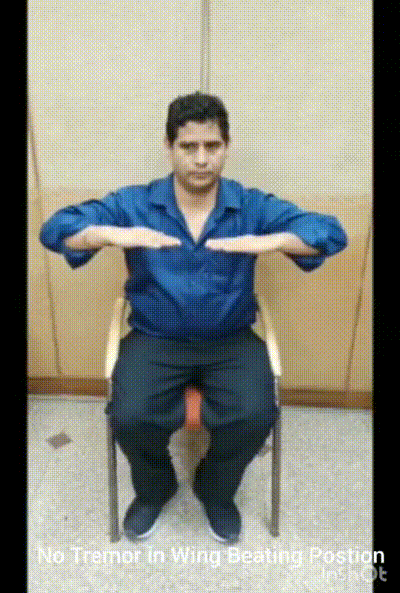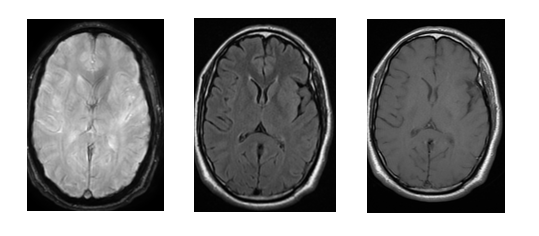Objective: Reporting a case of voice-tremor in a patient with heterozygous non-sense variation in exon 16 of VPS 16 gene
Background: Dystonia-30 is caused by homozygous/heterozygous mutations in the vacuolar protein sorting gene 16 (VPS 16). This is a relatively newly described gene for autosomal dominant/recessive pattern of dystonia with most of the reports coming in the last two years.1,2 The classical phenotype described is adolescent/early adulthood onset dystonia with symptoms beginning in neck, upper limbs, oromandibular region and face with gradual progression to generalization. Voice tremors in a case of VPS 16 mutation positive dystonia have not been described till now.
Method: A 37-year-old right-handed cook, with normal birth and developmental history, presented with voice tremors for last 10 years and right latero-collis with neck tremors for last 1 month. He had a positive family history of almost similar illness in his younger brother who had committed suicide. The patient had initially developed writing difficulty in the form of writer’s cramp. Within few months of developing writer’s cramp, his voice tremors became apparent. He also had a characteristic decrease in his pitch of voice to a whispering quality. For the last one month, he noticed slight posturing of head to right side (right latero-collis) with neck tremors. No additional extrapyramidal findings could be elicited in examination.
Results: He was evaluated for early onset isolated cervical dystonia with voice tremors. MRI brain did not reveal any significant abnormality with no iron deposition on SWI images (Figure 1). Although he did not have a response to levodopa-carbidopa combination of 125 mg thrice a day, he had a significant response to trihexyphenidyl in the form of reduced neck posturing and tremors in neck and voice. His clinical exome sequencing revealed a heterozygous nonsense variation in exon 16 of the VPS 16 gene (chr20:g.2863985C>T) that resulted in a stop codon and premature truncation of the protein at codon 505.This was classified as pathogenic. We could not do segregation analysis in his patients as his parents were not available.
Conclusion: Voice tremors can be the initial presentation of VPS-16 positive early adulthood onset dystonia.
References: 1. Park J, Reilaender A, Petry-Schmelzer JN et al Transcript-Specific Loss-of-Function Variants in VPS16 Are Enriched in Patients With Dystonia. Neurol Genet.Dec 7;8(1):e644.
2. Ostrozovicova M, Jech R, Steel D, et al. A Recurrent VPS16 p.Arg187* Nonsense Variant in Early-Onset Generalized Dystonia. Mov Disord. 2021;36(8):1984-1985.
3. Cai, X., Chen, X., Wu, S. et al. Homozygous mutation of VPS16 gene is responsible for an autosomal recessive adolescent-onset primary dystonia. Sci Rep 6, 25834 (2016).
4. Yıldız Y, Koşukcu C, Aygün D, et al. Homozygous missense VPS16 variant is associated with a novel disease, resembling mucopolysaccharidosis-plus syndrome in two
siblings. Clin Genet. 2021;100(3):308-317.
To cite this abstract in AMA style:
K. Kunj, A. Das, A. Srivastava. Voice- tremor in a patient with positive VPS 16 nonsense mutation: Expanding the phenotype [abstract]. Mov Disord. 2023; 38 (suppl 1). https://www.mdsabstracts.org/abstract/voice-tremor-in-a-patient-with-positive-vps-16-nonsense-mutation-expanding-the-phenotype/. Accessed December 29, 2025.« Back to 2023 International Congress
MDS Abstracts - https://www.mdsabstracts.org/abstract/voice-tremor-in-a-patient-with-positive-vps-16-nonsense-mutation-expanding-the-phenotype/







